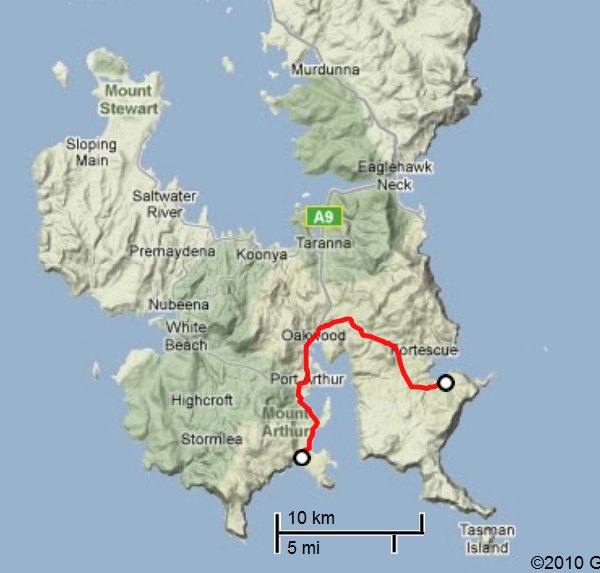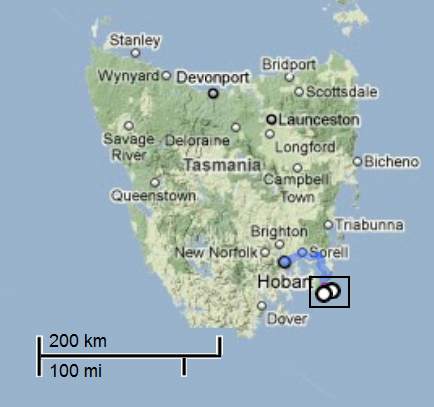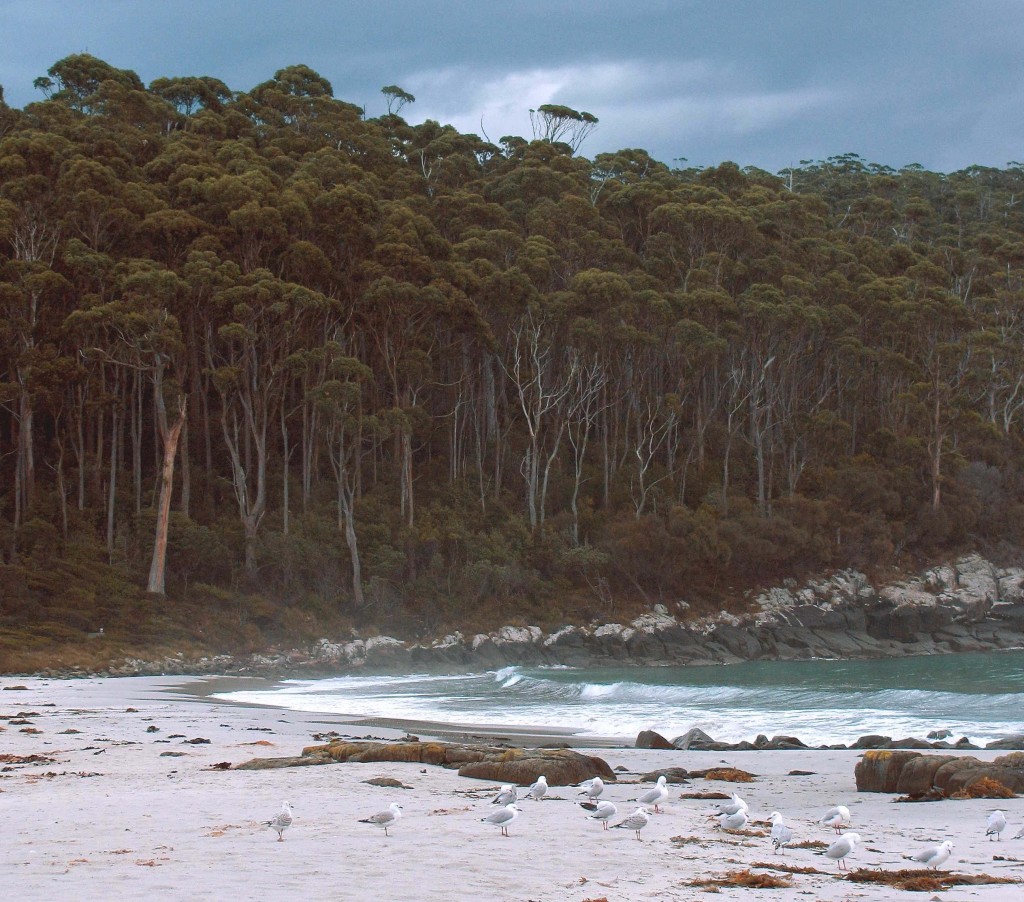
Silver Gulls on Fortescue Bay Beach (© Magi Nams)
Light rain overnight pattered gently on the tent at our campsite at Fortescue Bay, and we heard an unidentified critter sniffing at our thin-walled shelter in the night. Vilis cooked hot porridge for breakfast, which we ate while observing a red-necked wallaby forage among the trees behind our campsite. A black currawong – a crow-sized bird with yellow-eyes and a massive black beak – patrolled the campground and heralded us with loud, surprisingly musical calls. Wind shook tree branches high overhead and sent waves pounding onto shore.
After packing our rain gear as well as jackets and the usual hiking supplies, we set out for Bivouac Bay on the Tasman Track. Silver gulls and pied oystercatchers watched warily as we hiked Fortescue Bay’s pale sand beach, which had the squeakiest sand we’d ever encountered. Beside us, green-grey rollers smashed onto shore, urged on by a brisk wind.
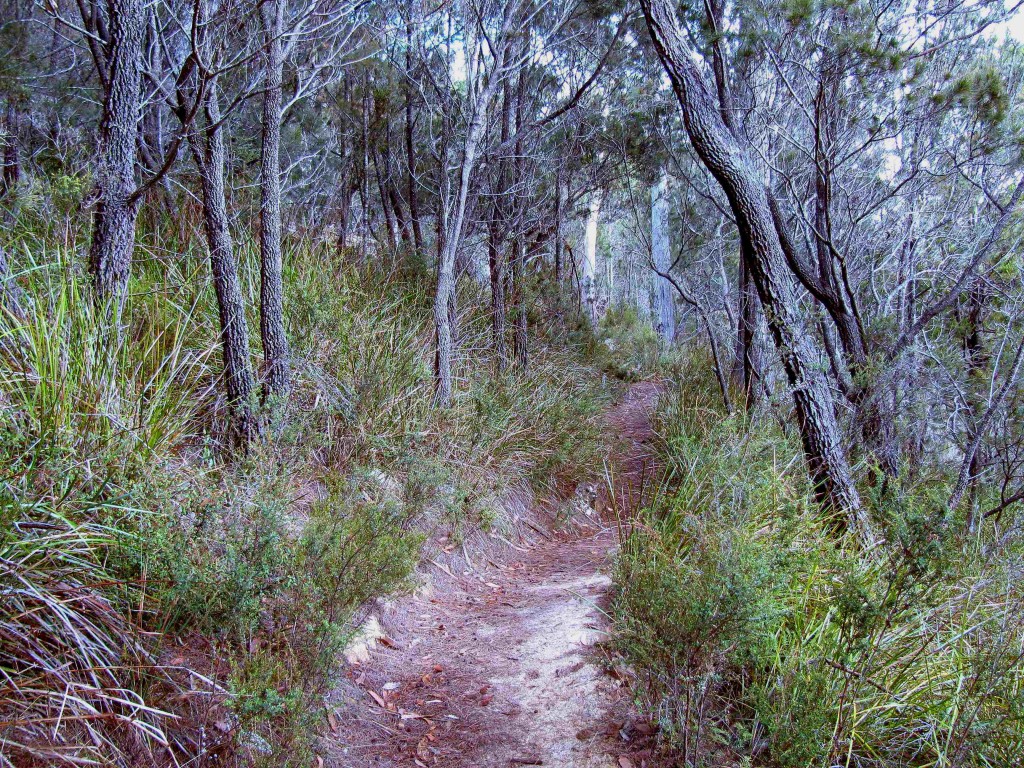
Tasman Coast Trail Near Fortescue Bay (© Vilis Nams)
At the north end of the beach, we followed the Tasman Trail up onto the side of the rocky headland that separates Fortescue Bay from Canoe Bay. Tasmanian thornbills – small brown songbirds with apparently boundless energy – flitted and chittered in scrub bush along the rocky shoreline. The track, edged with she-oaks, coarse ferns, prickly shrubs, and sedges and shaded by the soaring gum trees we’d seen from the beach, was easier on our feet than the section of the Cape Hauy Track we’d hiked last evening. Trees fallen across the trail had chunks cut out of them to allow passage and were nearly as thick as I am tall. The voices of teenaged students on a fieldtrip rang out in the early morning air, a colourful belt hanging from a shrub marking their flattened trail of vegetation leading down to the rocky shore.

Seated on Huge, Rotting Log on Tasman Trail (© Vilis Nams)
We descended to Canoe Bay, where a sailboat was anchored in the bay. As well, we spotted a dive boat and scuba diver near a rusted shipwreck partially protruding from the water. A line of little pied cormorants basked in the sun on a long, curved piece of metal projecting from the wreck.
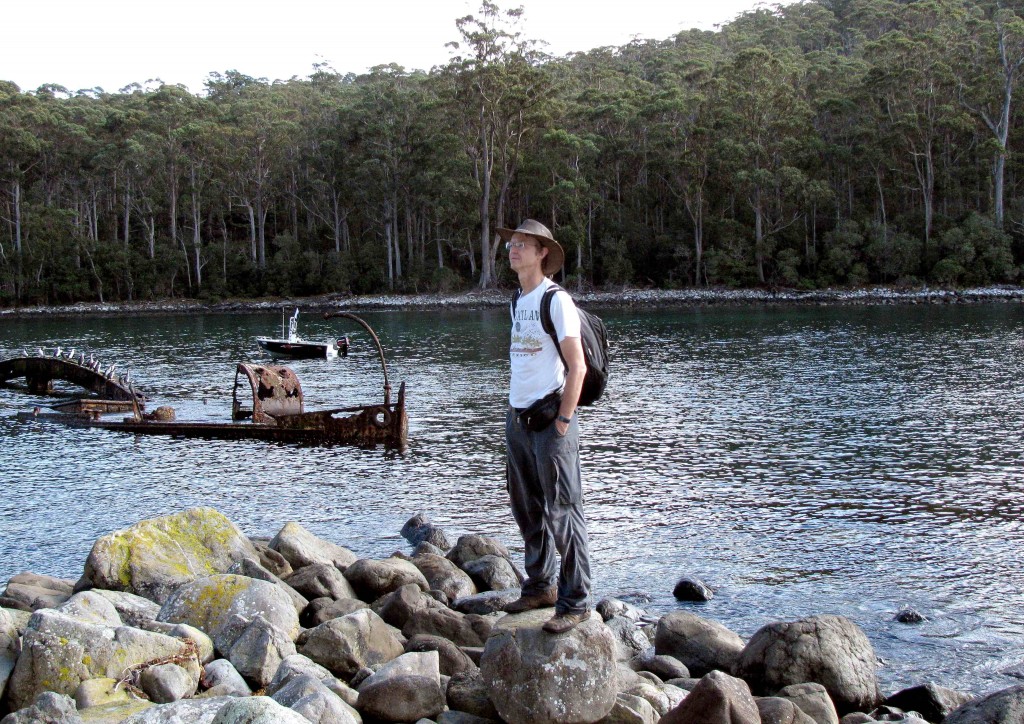
Vilis at Canoe Bay, with Wreck and Dive Boat (© Magi Nams)
Continuing around the bay, we followed the shoreline through wet sclerophyll forest comprised of lush, tall eucalypts. Pale pink blossoms hung from coastal heath plants, and a male superb fairy-wren in eclipse plumage sang from perches in a tangle of bracken and shrubs.

Here I’m on Tasman Track between Canoe Bay and Bivouac Bay (© Vilis Nams)
A footbridge led us into a dark, mysterious enclave of tree ferns, and beyond it, mosses formed brilliant green velvet covering rocks and fallen logs within the gum forest. Hyperactive thornbills foraged for insects in the trees, as did a flamboyant male scarlet robin whose black and white plumage was highlighted by a brilliant orange-red breast.
After a kilometre of hiking along the shore, we headed inland, climbing a set of stone steps set into a steep slope to gain the height of land between Canoe Bay and Bivouac Bay, after which we descended a steep slope to the second bay. There, we strolled among unoccupied wilderness campsites (serviced with a composting toilet) in open forest near the shore and wondered how the seemingly bare substrate of massive blocks of rock along the shore was able to support the lush gum forest growing atop it.
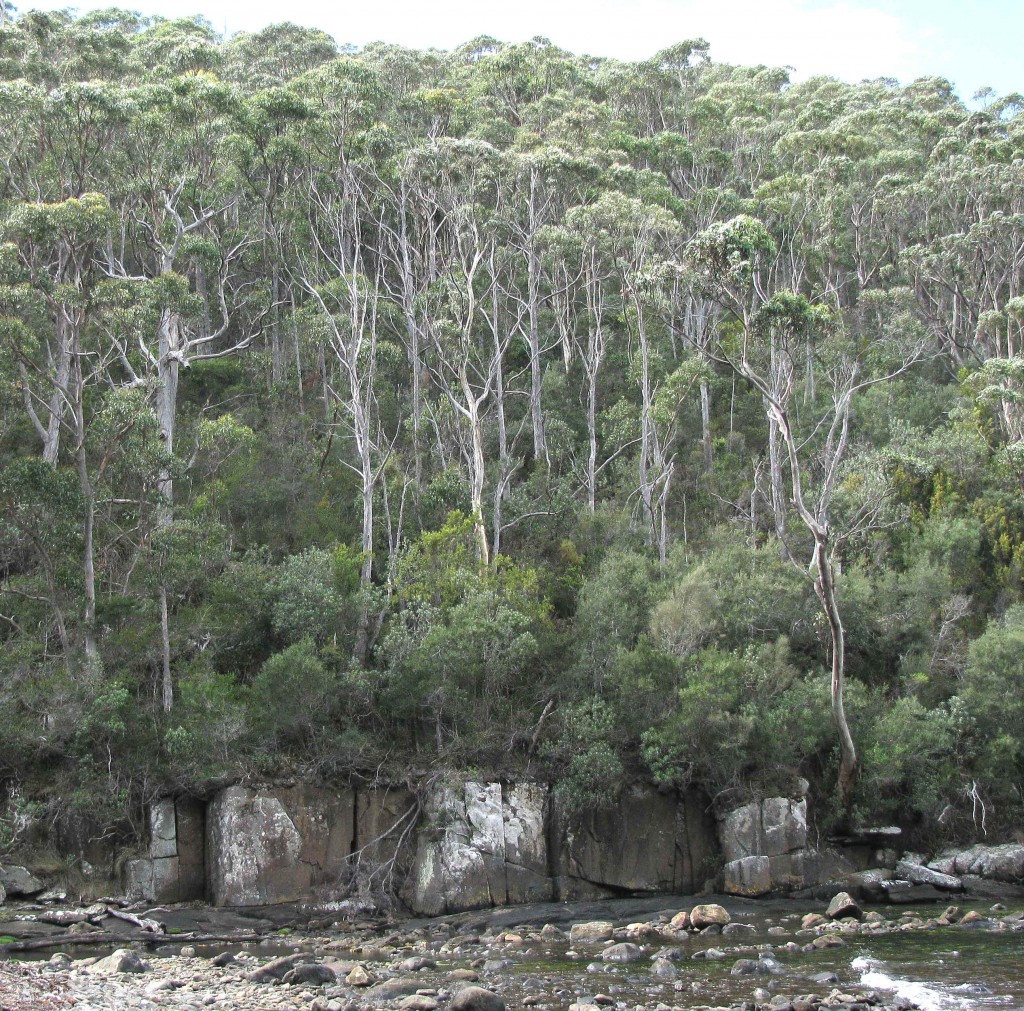
Eucalypt Forest on Rock Substrate at Bivouac Bay (© Magi Nams)
Our hike back to Fortescue Bay held surprises, mostly in the form of skinks that abandoned their sun-basking and darted out from under or near our feet on a steep, sun-baked section of track leading uphill en route to Canoe Bay. When motionless, the skinks resembled twigs among the leaves and stones, but as we passed by, they erupted into swift flashes of reptilian motion. I’d counted 3 skinks on the hike to Bivouac Bay, whereas on the return hike, Vilis and I spotted 25 or more, one of which I later identified as a metallic skink. Another surprise consisted of a trio of vividly-hued green rosellas feeding in thick shrubs near Canoe Bay. Found only in Tasmania, the green rosellas, a type of parrot, blew my socks off with their blue cheeks, red foreheads, emerald green backs, and yellow heads and bellies.
Four hours after setting out, we returned to Fortescue Bay, impressed with the Tasman Peninsula. It seemed a bushwalker’s paradise.
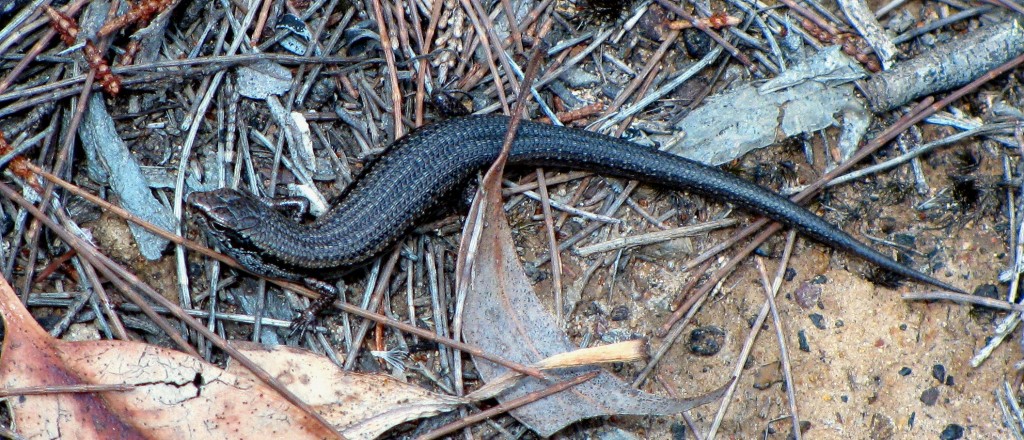
Metallic Skink on Tasman Coast Trail (© Vilis Nams)
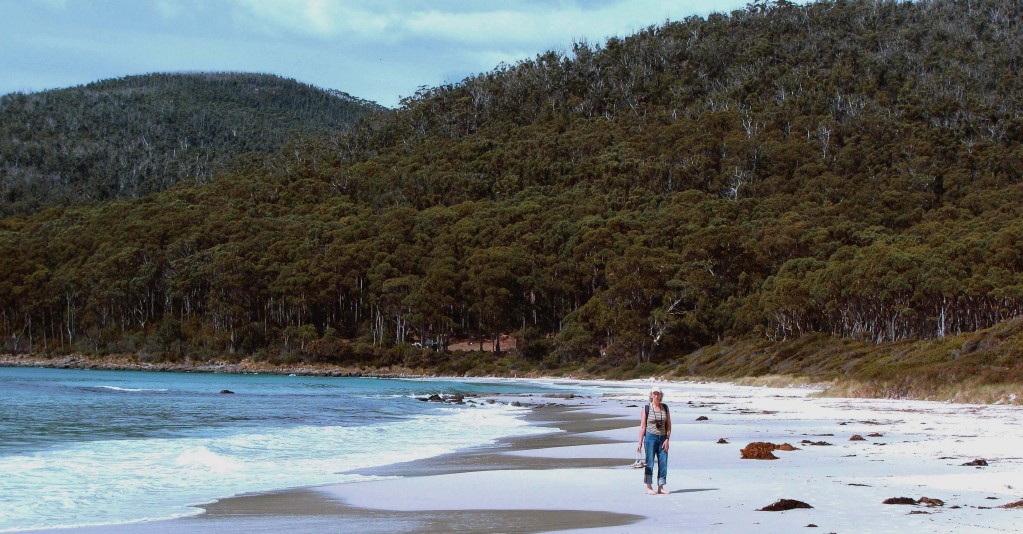
Here I’m on Fortescue Bay Beach (© Vilis Nams)
With the remainder of the afternoon at our disposal, we drove out the gravel access road to the A9 and south past Port Arthur – site of Tasmania’s infamous colonial penal colony – to Mango Bay and Remarkable Cave. There on the south coast of Tasman Peninsula, dense coastal heaths sheared and sculpted by ocean winds covered hillsides above cliffs dropping to the sea.
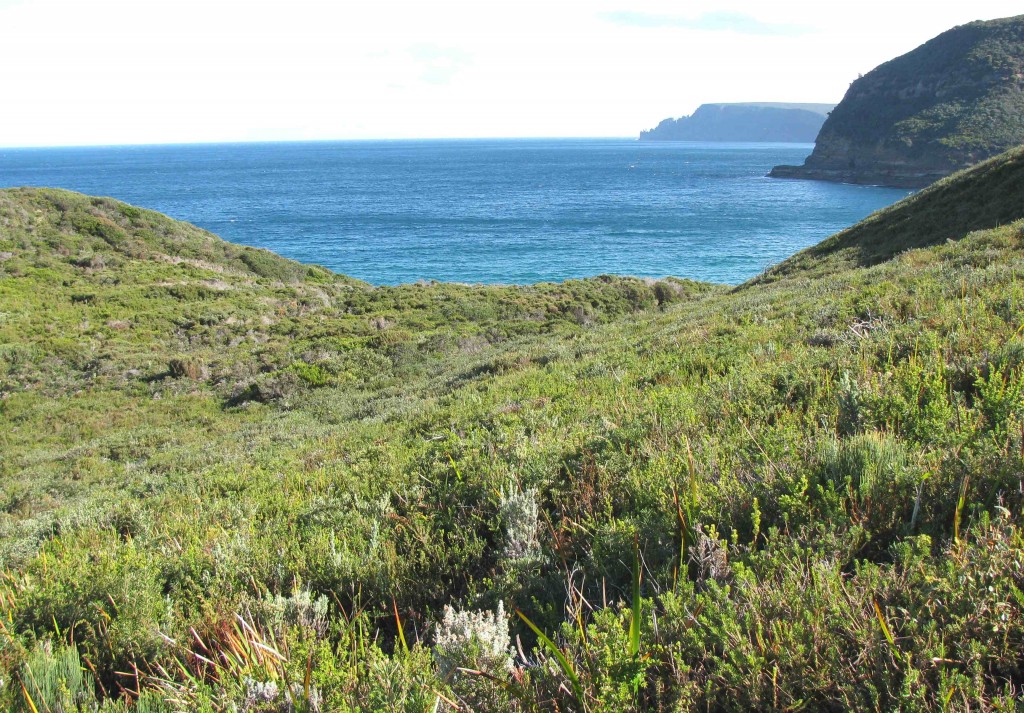
Coastal Heaths Above Mango Bay (© Vilis Nams)
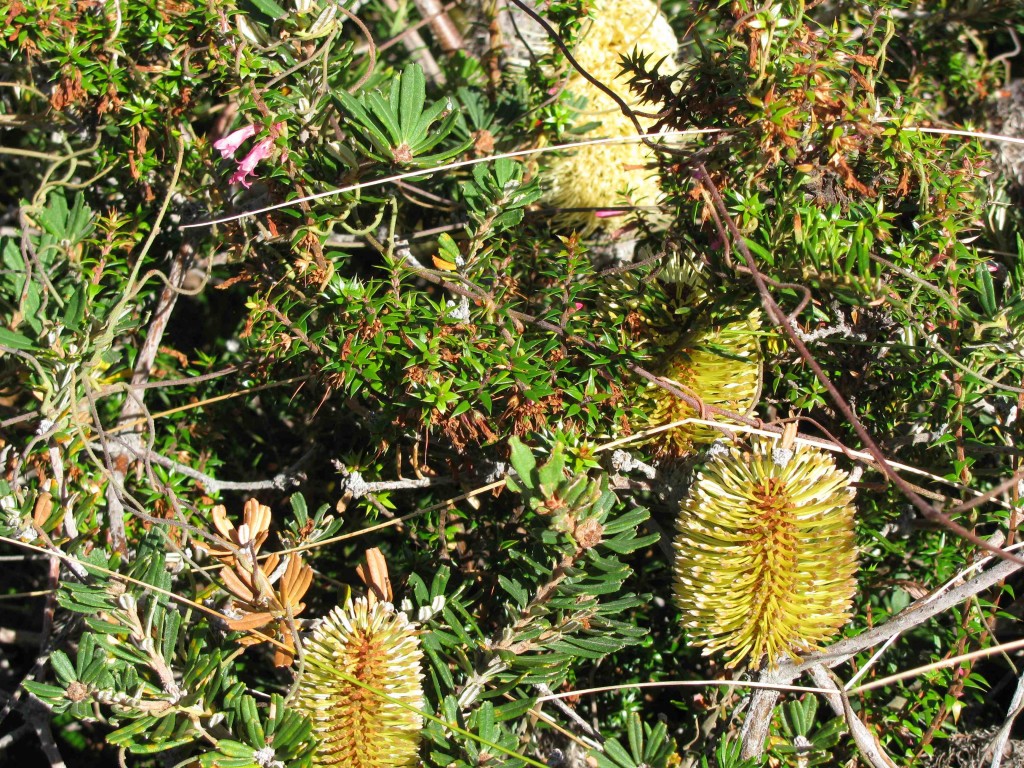
Heath with Banksia Blossoms (© Vilis Nams)
A boardwalk led us down to Remarkable Cave, which resembled a keyhole in a cliff wall. The cave provided a lookout to breaking surf, where die-hard surfers on short boards battled the pounding swells. Beside us, the cliff face showed broken and folded layers of sedimentary rock and soared upward to a cap of forest far above us.

Remarkable Cave (© Vilis Nams)
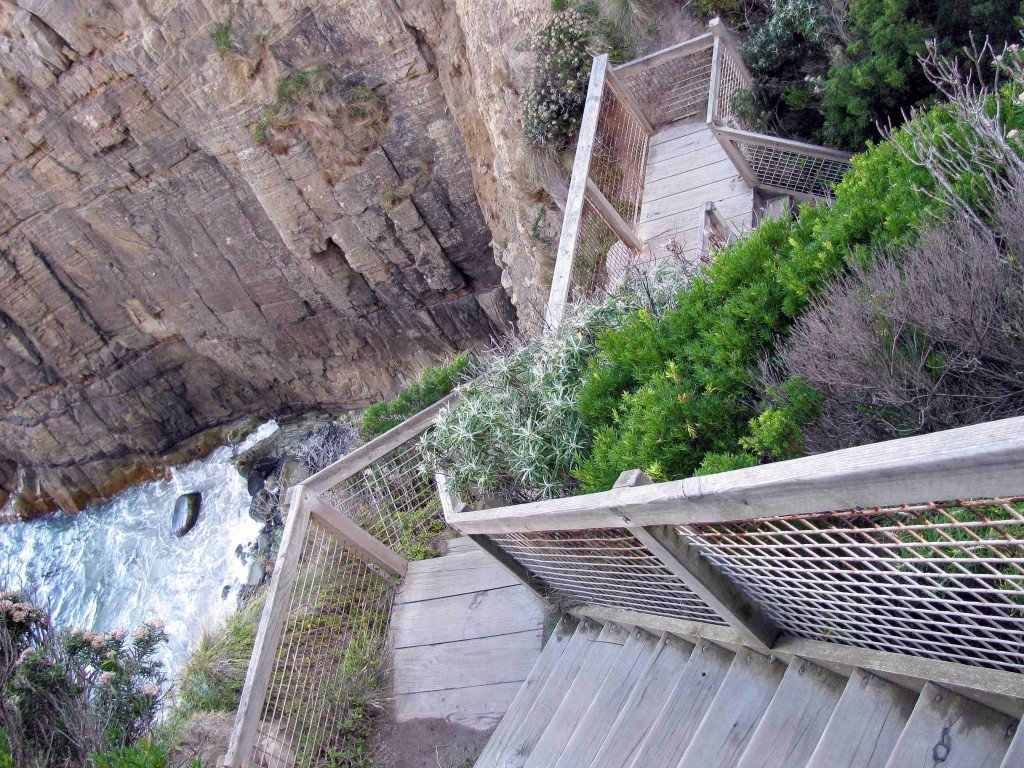
Stairs to Remarkable Cave (© Vilis Nams)
After leaving the cave, we walked a short stretch of track through the coastal heath, a plant community strikingly different from the tall forests we’d hiked through earlier in the day. Dwarf bansksia shrubs bore yellow, bottlebrush-like blossoms, while bright pink, trumpet-shaped flowers hung from prickly-leaved heaths. The track offered spectacular views of coastal headlands, including Cape Raoul’s splintered stacks of dolomite in the distance – a more than fitting end to our explorations for the day.
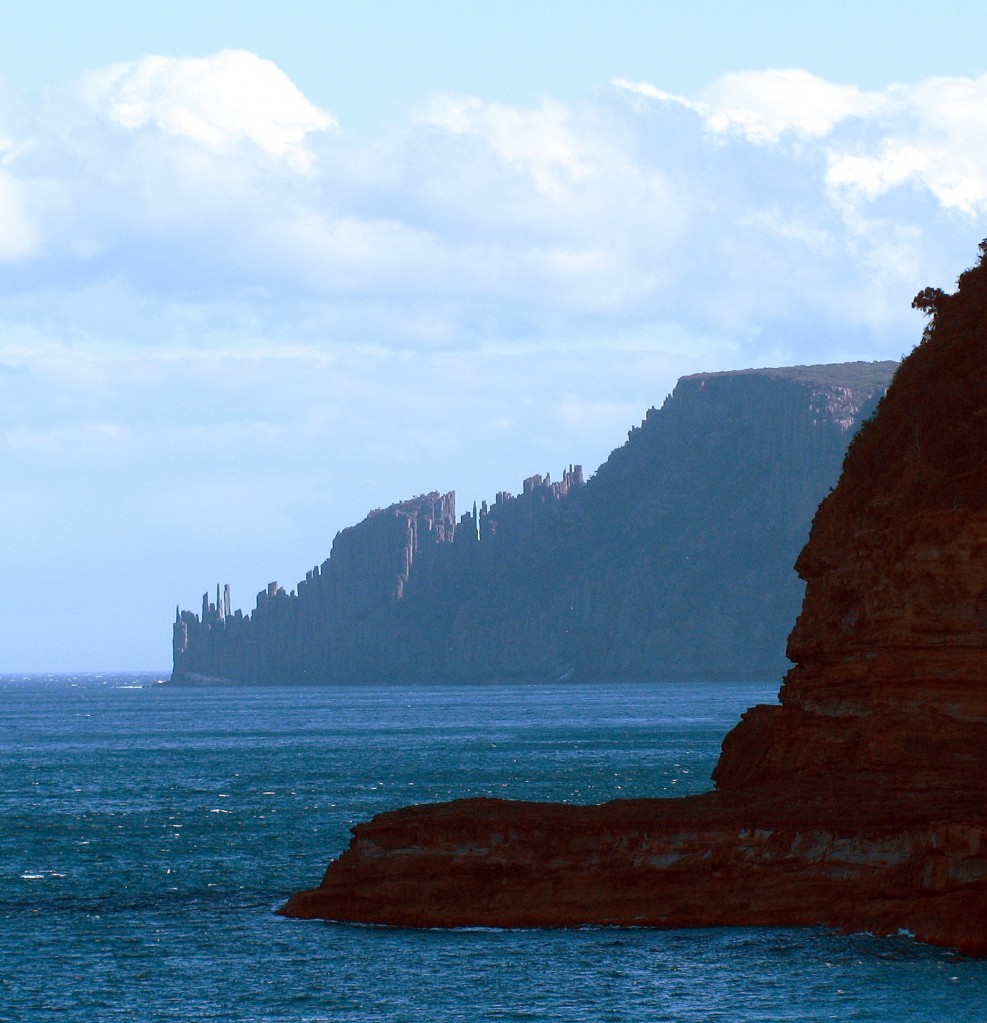
View of Cape Raoul, from Mango Bay (© Vilis Nams)
Today’s fauna: *black currawong, silver gulls, pied oystercatchers, *Tasmanian thornbills, little pied cormorants, superb fairy wren, *scarlet robin, *forest raven, *green rosellas, red-necked wallaby, *metallic skinks. (*lifelist sighting)


